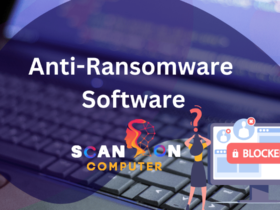Introduction: The Rising Need for Free EDR
In 2025, cyber threats continue to evolve at breakneck speed. Ransomware attacks surged by over 150% year-over-year, while advanced persistent threats (APTs) exploit lateral movement and fileless techniques to evade traditional antivirus¹. For many security teams, licensing costs are a barrier to adopting full-featured EDR. Free EDR solutions bridge this gap, delivering continuous endpoint visibility, behavior-based detection, and automated response—empowering organizations of all sizes to defend against sophisticated attacks without new subscription fees.
Why Free EDR Matters for Modern Security?
Cost-Effective Threat Detection
Free EDR eliminates licensing expenses, lowering total cost of ownership (TCO) and enabling redeployment of budget toward staffing and threat intelligence subscriptions.
Bridging Visibility Gaps
While antivirus and firewall tools focus on known signatures and perimeter enforcement, EDR captures granular process, file, registry, and network telemetry—uncovering stealthy attacker behaviors.
Enabling Rapid Response
Data-driven automation—such as process termination, file quarantine, and network isolation—reduces dwell time from days to minutes. Free EDR platforms often include scripting engines or built-in playbooks that trigger containment actions the moment a threat is detected.
Core EDR Capabilities Every Security Team Needs
Telemetry Collection and Aggregation
Endpoints generate vast volumes of data. An effective EDR consolidates logs, file integrity events, process trees, and network connections into a central repository for analysis.
Behavioral and Anomaly Analysis
Machine learning models and custom rules spot deviations from baseline system behavior—detecting credential dumping, privilege escalation, and code injection.
Threat Hunting and Investigation
Security specialists can query stored telemetry for Indicators of Compromise (IoCs), Tactics, Techniques, and Procedures (TTPs), and attacker patterns—enabling proactive hunts.
Automated Containment and Remediation
Upon detecting malicious activity, EDR systems can automatically quarantine affected files, terminate suspicious processes, and isolate endpoints from the network.
Reporting, Compliance, and Forensics
Detailed forensics reporting supports incident post-mortems, regulatory audits, and executive dashboards that demonstrate security posture improvements.
1. OSSEC
Overview and Architecture
OSSEC is a host-based intrusion detection system (HIDS) that combines log analysis, file integrity monitoring (FIM), rootkit detection, and active response in a lightweight agent-server model.
Key Features and Benefits
-
Log Analysis: Real-time parsing of syslog, Windows Event Logs, and application logs.
-
File Integrity Monitoring: Tracks changes to critical files and registry keys.
-
Active Response: Uses scripts to block IPs, modify firewall rules, or kill processes automatically.
-
Cross-Platform: Supports Windows, Linux, macOS, Solaris, and BSD.
Deployment Models and Scalability
-
Standalone Server: Ideal for small networks—single OSSEC server collects data from all agents.
-
Clustered Manager: For large enterprises, use multiple manager servers with load balancing and a distributed database backend.
Real-World Use Cases
-
Retail Compliance: Enforce PCI DSS file integrity requirements on point-of-sale systems.
-
Industrial Control Systems: Monitor critical ICS servers for unauthorized configuration changes.
Actionable Tips for Tuning OSSEC
-
Regularly update rule sets from the OSSEC repository.
-
Customize active response scripts to align with network segmentation.
-
Implement alert throttling to reduce noise and focus on high-fidelity incidents.
2. Wazuh
Extending OSSEC for Enterprise
Wazuh builds on OSSEC core, offering a unified web interface, enhanced analytics, and seamless integration with cloud platforms.
Security Analytics and Dashboards
-
Kibana Integration: Pre-built dashboards visualize alerts, risk severity, and agent status.
-
Elastic Stack Support: Leverage Elasticsearch for scalable storage and search across hundreds of millions of events.
Vulnerability Detection and Compliance
-
Vulnerability Scanning: Regularly checks installed software versions against CVE databases.
-
Compliance Frameworks: Automated checks for HIPAA, GDPR, PCI DSS, and CIS benchmarks.
Cloud-Native Deployment Options
-
Preconfigured AWS CloudFormation and Azure Resource Manager templates speed up VPC-secure deployments.
-
Container Monitoring: Agents support Docker and Kubernetes environments, tracking container lifecycle events.
Optimization Best Practices
-
Enable data indexing rollover policies to control storage costs.
-
Fine-tune vulnerability agent schedules to avoid spikes.
-
Leverage Wazuh’s API for custom integrations with ticketing and SOAR platforms.
3. OpenEDR by Xcitium
MITRE ATT&CK Alignment
OpenEDR maps detected alerts to specific MITRE ATT&CK techniques—providing context-rich threat intelligence and standardized reporting.
Lightweight Agents and Performance
Agents consume <5 MB RAM and negligible CPU, ensuring minimal impact on endpoint performance.
Automated Threat Containment
-
Process Isolation: Instantly isolates malicious binaries in sandboxed environments.
-
Scripted Response: Use prebuilt playbooks to automate disk rollback and registry restoration.
Community Edition vs. Commercial Add-Ons
-
Community Edition: Free, with core detection, analytics, and response features.
-
Commercial Add-Ons: Offer extended data retention, advanced threat intelligence feeds, and premium support.
Rapid Deployment Guide
-
Download Agent Installer: MSI for Windows, DEB/RPM for Linux, PKG for macOS.
-
Install via GPO/Shell Script: Automate across Active Directory or Ansible playbooks.
-
Connect to Server: Agents authenticate using JWTs and TLS.
-
Verify Connectivity: Check agent status in the web console.
4. Comodo OpenEDR
Modular Design and Extensibility
Comodo’s architecture separates collection, analysis, and response into modules—allowing custom rule plugins and third-party extensions.
Event Correlation and Analytics
Leverages a high-performance event bus to correlate endpoint events with threat intelligence feeds in real time.
Root Cause Analysis Workflow
-
Timeline Generation: Automatically reconstructs attack chains from initial compromise to lateral movement.
-
Forensic Snapshots: Captures memory dumps and file system state at key events.
Integration with Existing Toolchains
-
SIEM: Forward alerts via syslog or REST API.
-
SOAR: Trigger automated playbooks in Splunk Phantom, Palo Alto Cortex XSOAR, or open-source alternatives.
Community Support Resources
-
Active Slack channel for rule sharing.
-
GitHub repository with sample detection rules and onboarding guides.
5. GRR Rapid Response
Live Forensics Capabilities
GRR excels at remote forensic investigations, collecting volatile and nonvolatile artifacts without endpoint downtime.
Remote Artifact Collection
-
Memory Acquisition: Capture full RAM contents to analyze in volatility.
-
File System Snapshots: Gather file digests, permissions, and timestamps for forensic baselining.
-
Process Listings: Enumerate running processes and network connections on demand.
Automated IR Playbooks
Use Python-based flows to automatically triage endpoints—extracting registry hives, browser history, and Windows Event Logs.
Scaling GRR for Large Estates
-
Hunts and Fleets: Create hunt campaigns that execute queries across thousands of clients simultaneously.
-
Load Balancing: Distribute traffic across multiple Frontends and Worker services.
Advanced Query Techniques
-
Leverage GRR’s AFF4-based datastore to perform time-based searches.
-
Write custom flows to detect memory-resident rootkits and kernel implants.
6. OSQuery
SQL-Based Endpoint Visibility
OSQuery exposes endpoint state as virtual tables—allowing simple SQL queries such as:
SELECT name, path, sha256 FROM hash WHERE path LIKE '/usr/bin/%';
Crafting High-Value Queries
-
Process Anomalies: Identify unsigned binaries:
SELECT * FROM processes WHERE on_disk = 0;
-
Persistence Mechanisms: Query autorun entries:
SELECT * FROM startup_items;
Integrating with SIEM and SOAR
Use osqueryd to schedule queries and ship JSON results via Fluentd or Beats to Elasticsearch, Splunk, or Graylog.
Scheduled Monitoring Strategies
-
Deploy query packs for continuous checks on file integrity, network connections, and privilege escalation.
-
Implement difference queries to detect unexpected changes in scheduled tasks or service configurations.
Use Case: Proactive Threat Hunting
Combine OSQuery with a Jupyter notebook to visualize endpoint anomalies over time, uncovering stealthy lateral movement patterns before alerts trigger.
Comparative Table of Free EDR Solutions
| EDR Tool | Telemetry Types | Automated Response | Platforms Supported | Ideal Use Case |
|---|---|---|---|---|
| OSSEC | Logs, FIM, rootkit detection | Firewall rules, scripts | Win, Linux, macOS, BSD | Host-based detection & compliance |
| Wazuh | Logs, vulnerability data | Active response scripts | Win, Linux, macOS, containers | Compliance, centralized analytics |
| OpenEDR | Process, file, network telemetry | Isolation, kill, rollback | Win, Linux, macOS | Enterprise-grade free EDR |
| Comodo OpenEDR | Endpoint events, event correlation | Quarantine, block, alerts | Win, Linux, macOS | Modular community-driven EDR |
| GRR Rapid Resp. | Memory, FS snapshots, live exec | Custom Python playbooks | Win, Linux, macOS | Remote forensics & incident response |
| OSQuery | Process, registry, network tables | N/A | Win, Linux, macOS | Threat hunting via SQL querying |
Best Practices for Implementing Free EDR
-
Pilot and Tune: Start with a small cohort of endpoints. Refine detection rules and response scripts to minimize false positives.
-
Centralize Logging: Integrate EDR alert streams into your SIEM or ELK stack for holistic visibility and correlation with network data.
-
Automate Response Playbooks: Develop clear runbooks that map EDR alerts to containment actions—quarantining processes, revoking credentials, or blocking IP addresses.
-
Regular Updates: Keep agent binaries, rule sets, and vulnerability databases current to detect emerging threats.
-
Team Training: Conduct tabletop exercises simulating EDR alerts and responses. Encourage threat-hunting workshops using OSQuery and GRR query packs.
-
Leverage Community Content: Subscribe to rule feeds, share custom decoders on GitHub, and participate in forums to stay ahead of new attack techniques.
-
Measure and Report: Track metrics such as mean time to detect (MTTD) and mean time to respond (MTTR) to demonstrate EDR effectiveness to stakeholders.
Frequently Asked Questions
1. What is Free EDR?
Free EDR refers to open-source or community-supported endpoint detection and response platforms that provide threat detection, investigation, and automated response features at no licensing cost.
2. How does Free EDR differ from antivirus?
Antivirus relies on signature-based detection of known malware, whereas EDR monitors endpoint behavior, performs anomaly detection, and automates containment against zero-day and fileless attacks.
3. Can Free EDR scale for large enterprises?
Yes—solutions like Wazuh, OpenEDR, and Comodo OpenEDR support thousands of endpoints with centralized management, load-balanced architecture, and cloud-native deployment templates.
4. Is Free EDR secure for production?
When properly configured—ensuring secure agent-server communication, encrypted storage, and hardened servers—free EDR tools offer robust security comparable to commercial offerings.
5. Do Free EDR tools include automated response?
Most free EDR platforms provide active response capabilities such as process termination, file quarantine, firewall rule updates, or endpoint isolation based on defined playbooks.
6. How do I choose the right Free EDR?
Evaluate factors like agent footprint, telemetry depth, ease of integration, community support, and available playbooks. Pilot multiple tools to assess rule accuracy and management overhead.
7. What support is available for Free EDR?
Extensive online communities, GitHub repositories, Slack channels, and vendor forums offer documentation, rule sets, and peer advice. Commercial support options may be available for enterprise-grade SLAs.
8. Can I integrate Free EDR with other security tools?
Yes—most free EDR solutions support API-based integrations and log forwarding to SIEM, SOAR, ticketing systems, vulnerability scanners, and threat intelligence platforms.
Conclusion & Call-to-Action
Free EDR solutions empower security teams to achieve advanced endpoint visibility, behavioral threat detection, and rapid automated response—without licensing fees. Pilot OSSEC or OSQuery for lightweight monitoring, adopt Wazuh or OpenEDR for enterprise-grade analytics and isolation, use GRR for forensic investigations, and integrate Comodo OpenEDR for event correlation.
Strengthen your endpoint defense today: download your chosen free EDR tool, deploy agents on a test group, and refine your detection playbooks. Join the open-source security community to share insights, contribute rules, and stay ahead of emerging threats. Market-leading endpoint protection starts with a free download—secure your infrastructure now!













Leave a Reply
View Comments